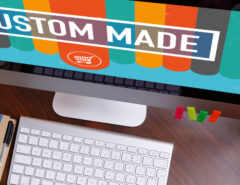 Is brighter always better? When it comes to automobile headlights, high-wattage beams are perfect for spotting and avoiding jaywalking deer on pitch-dark county roads. However, military-grade headlights on busy freeways would be distracting, blinding and dangerous.
Is brighter always better? When it comes to automobile headlights, high-wattage beams are perfect for spotting and avoiding jaywalking deer on pitch-dark county roads. However, military-grade headlights on busy freeways would be distracting, blinding and dangerous.
No one enjoys staring directly into a flashlight. And no driver likes being followed by someone showing off their new LED high beams. They can even make you wish you were missing rear and side view mirrors. When it comes to headlights, there needs to be a balance between brightness and the wellbeing of other motorists.
And when it comes to web design, the same can be said for finding a good medium between fancy bells and whistles and user-friendly functionality. A dazzling combination of User Interface (UI) and User Experience (UX) best practices means cutting-edge interactive content complemented by easy navigation and helpful information.
To strike this balance, it’s important not to lose sight of the forest for the trees–but be sure not to neglect your individual oaks and cedars either. A sharp graphic is less impressive in the company of a spelling error. Compelling content is underwhelming on an outdated webpage. Here are a few UI and UX green lights to keep potential customers cruising through your site:
- Use of Responsive Design for Smartphones and Tablets
- Active and Engaging Links
- High-Resolution, Vibrant Images
- Attention to Grammar and Spelling
- Fast-Loading Pages
- Professional Logo and Design Elements
- Strategic Calls to Action
Utilizing great UI and UX will prevent promising web surfers from veering off course and into your competitor’s parking lot. While the ideal website varies from industry to industry, the one-two punch of slick web design and stellar content is sure to turn heads and attract attention.
Make sure your website is optimized to drive traffic down a smooth and convenient road, not a winding detour full of potholes.
And above all, never get into the habit of driving with your brights on.



